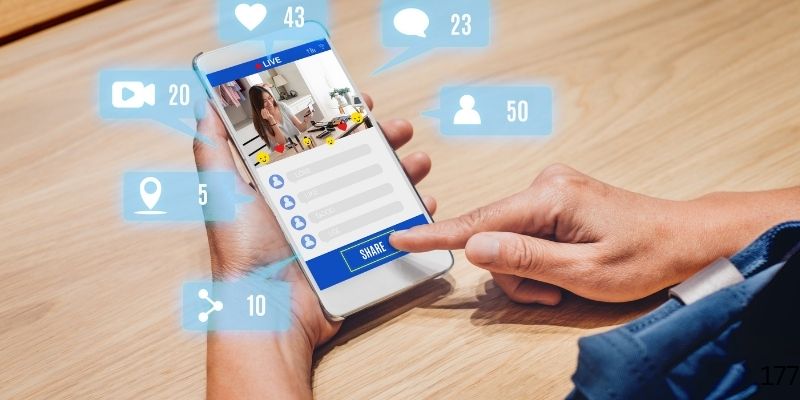In today’s digital world, people trust other people more than ads. That’s where influencer marketing comes in. Influencer marketing is a strategy where brands collaborate with online personalities (influencers) to promote their products or services. These influencers have loyal followers who trust their opinions.
Finding the right influencer is crucial. A good match can help your brand grow fast. But the wrong choice can waste time and money and even harm your reputation. This guide will walk you through everything you need to know—from understanding what influencers are to finding, contacting, and working with the best ones for your brand.
What Is an Influencer?
An influencer is a person who can guide or impact others’ buying decisions because of their knowledge, personality, or strong connection with their audience. They usually have a good following on platforms like Instagram, YouTube, TikTok, or personal blogs. People trust their advice, making them valuable partners for brands.
Types of Influencers:
- Mega Influencers: These are celebrities or very famous people with more than 1 million followers.
- Macro Influencers: They have between 100,000 to 1 million followers and are known in specific areas like fashion, fitness, or tech.
- Micro-Influencers: With 10,000 to 100,000 followers, they often have a highly engaged and loyal audience.
- Nano Influencers: They have 1,000 to 10,000 followers, often with very close relationships with their audience.
Influencers can help your brand by:
- Promoting your products in a natural, trusted way.
- Creating valuable and engaging content.
- Increasing your brand’s visibility, trust, and reach online.
Working with the right influencer can bring real value and help your business grow steadily.
Why Your Brand Needs Influencers
Influencer marketing can be a powerful tool for growing your brand. Influencers have built loyal followers who listen to their opinions and trust their recommendations. When an influencer promotes your product, it feels more like a trusted suggestion than an advertisement, which helps build trust quickly.
- One significant benefit is reaching the right audience. Influencers usually talk to a specific group of people—based on age, hobbies, interests, or location. By working with the right influencer, you can connect directly with the people most likely to buy your product.
- Another benefit is boosting brand awareness. When an influencer shares your product on their profile, their followers learn about your brand. It gives your business more visibility and can attract new customers who may have never heard of you before.
- Influencers can also help increase your website traffic and sales. If their followers like what they see, they may click your website link, check out your product, and make a purchase. Because they trust the influencer, they are more open to trying your brand.
Whether you run a small local business or a large company, influencers can help you grow. They bring trust, targeted exposure, and authentic engagement. By choosing the right influencer and building a good relationship with them, your brand can benefit in many ways—quickly and effectively.
Know Your Target Audience First
Before you even begin searching for influencers, it’s essential to understand who your ideal customers are. Knowing your audience helps you find influencers who naturally connect with the people you want to reach. This step saves time and makes your influencer campaigns more effective.
Start by creating a clear profile of your ideal customer. Think about:
- What age group do they belong to (teens, young adults, middle-aged)?
- What are their main interests or hobbies (fashion, tech, fitness, food)?
- What challenges or problems are they trying to solve?
- Where do they live—locally, nationally, or internationally?
- What platforms do they use most (Instagram, YouTube, TikTok)?
- What kind of content do they enjoy—funny videos, tutorials, reviews?
Understanding these details will help you focus your influencer search on people who already speak to your target group. For example, if your audience loves eco-friendly products and watches YouTube reviews, you should look for influencers who review green products on YouTube.
Also, knowing your audience helps you create better messages that connect with them emotionally. When influencers talk in a way that matches your audience’s style and values, the promotion feels more real and trustworthy.
In short, the better you know your audience, the easier it will be to find the right influencers—and the better results you’ll get from your marketing efforts.
Decide What Kind of Influencer You Need
Not all influencers are a good fit for every brand. It’s essential to choose the right type of influencer based on what you want to achieve from your campaign.
If your goal is to make more people aware of your brand, go for macro or mega influencers. These influencers have large audiences and can give your brand significant visibility. However, they might be more expensive and less personal.
If you want to build trust and engagement, then micro or nano influencers could be better. They have smaller but very loyal followers who trust their recommendations. These influencers often get better interaction and can feel more relatable to their audience.
For brands in specific industries like beauty, fitness, or tech, niche influencers are a wise choice. They focus on one topic and have followers who are interested in that exact thing. For example, a vegan food brand can work with an influencer who posts only about plant-based recipes.
Also, think about the influencer’s style:
- Lifestyle influencers talk about many different things—fashion, food, travel, and more.
- Niche influencers focus on one category—like gaming, parenting, or fitness.
Choosing the right kind of influencer helps you get better results. It ensures your message reaches the right people most effectively.
Where to Find Influencers (Best Platforms & Tools)
Finding the right influencers starts with knowing where to look. There are many platforms and tools available that can help you connect with the best influencers for your brand.
Social Media Platforms:
- Instagram: One of the most popular platforms for influencer marketing. It’s ideal for niches like fashion, beauty, travel, and food. You can search through hashtags and explore trending posts.
- YouTube: Best for long-form content like reviews, tutorials, and product demos. Great for tech, lifestyle, and education influencers.
- TikTok: Perfect for creating viral content. It’s popular among younger audiences and works well for fun, creative brand promotions.
- LinkedIn: Useful for B2B brands. You can find industry experts and professionals who influence business decisions.
Influencer Discovery Tools:
- BuzzSumo: Helps find content creators and bloggers in your niche.
- Upfluence: Offers an extensive database of influencers and filters to find the right match.
- Heepsy: This lets you search by follower count, engagement rate, location, and category.
- HypeAuditor: Excellent for checking if an influencer’s followers are real and for analyzing engagement metrics.
Manual Search Tips:
- Search relevant hashtags (like #techreview, #veganlifestyle, #fitness motivation).
- See which influencers your competitors work with.
- Check your followers to find micro or nano influencers who already love your brand.
By using these platforms, tools, and search tips, you can build a strong list of potential influencers who are the perfect fit for your brand.
Check the Influencer’s Engagement and Authenticity
Having thousands of followers is not enough. What matters is whether those followers are real and engaged.
Look for:
- Engagement Rate: Are people liking, commenting, and sharing their posts?
- Comment Quality: Are the comments genuine or spammy?
- Follower Authenticity: Use tools like HypeAuditor to detect fake followers.
A small influencer with real, active followers is better than a big one with bots.
Review Content Quality and Brand Fit
Next, check if the influencer matches your brand style.
Ask yourself:
- Is their content well-made and professional?
- Do they post regularly and interact with their audience?
- Do they match your brand’s tone (fun, serious, stylish, etc.)?
- Have they promoted similar brands before?
Working with someone who naturally fits your brand will make the partnership look authentic.
Reach Out to Influencers Professionally
Once you shortlist potential influencers, it’s time to reach out.
How to Contact:
- Direct Message (DM) on social media
- Email (usually in their bio or website)
- Contact forms on their blog or link in the bio
What to Include in Your Message:
- Who you are (brand intro)
- Why did you choose them
- What you want to offer (paid post, free product, affiliate deal)
- What’s in it for them (money, product, exposure)
Tip: Keep the message short, friendly, and clear. Don’t use too much marketing language.
Measure the Results of Your Influencer Campaign
Once your influencer campaign goes live, it’s essential to track how well it’s working.
Set Clear KPIs:
- Website clicks
- Number of sales
- Social media reach
- Engagement (likes, comments, shares)
Tools to Use:
- Google Analytics (track traffic and conversions)
- Instagram Insights or TikTok Analytics (for engagement)
- Affiliate links or discount codes (to track sales)
By measuring results, you learn what works and what needs improvement.
Final Tips to Succeed in Influencer Marketing
To get the best results from influencer marketing, you need more than just picking the right person. Here are some final tips to help your campaign succeed:
Build Long-Term Relationships
Don’t just work with an influencer once and move on. Try to build a long-term partnership. When influencers talk about your brand regularly, their audience starts to trust your brand more. Long-term collaborations look more natural and bring better results.
Be Clear and Honest
Make sure both you and the influencer understand the plan. Clearly explain what you want—like how many posts, what message to share, and when to post. Also, tell them what they will get in return—such as payment, free products, or shoutouts. Clear communication avoids confusion and helps build trust.
Follow the Rules
Always follow advertising and social media rules. If the post is paid or sponsored, the influencer must mention it. Use hashtags like #ad, #sponsored, or #partnership to stay transparent. Being honest keeps your brand safe and trustworthy.
Track Results and Learn
Every campaign is a chance to learn. Use tracking tools to check how many people viewed, liked, or clicked on your content. Look at what worked and what didn’t. Use this information to improve your next campaign.
In short, influencer marketing works best when it feels real and honest. Focus on building genuine connections and clear plans and learning from each step.
Conclusion
Finding the right influencers may take some time, but the results are worth it. A successful influencer marketing campaign starts with a clear understanding of your target audience. Know who you want to reach and what kind of message you want to share.
Next, choose influencers who match your brand’s values, style, and goals. Don’t just go for big names—look for people who have real followers and strong engagement. Use influencer marketing tools like HypeAuditor, Upfluence, or BuzzSumo to find the right fit.
Once you’ve found potential influencers, review their content carefully. Check how often they post, how their audience responds, and whether their content matches your brand. Reach out to them in a professional way with precise details about your campaign.
After the campaign, don’t forget to track results. Look at likes, comments, clicks, and conversions. It helps you learn what worked and improve future campaigns.
In short, influencer marketing can boost your brand’s visibility and trust in ways traditional ads cannot. When done right, it creates real connections and long-lasting impact. Start finding the right influencers today and grow your brand the smart way.



